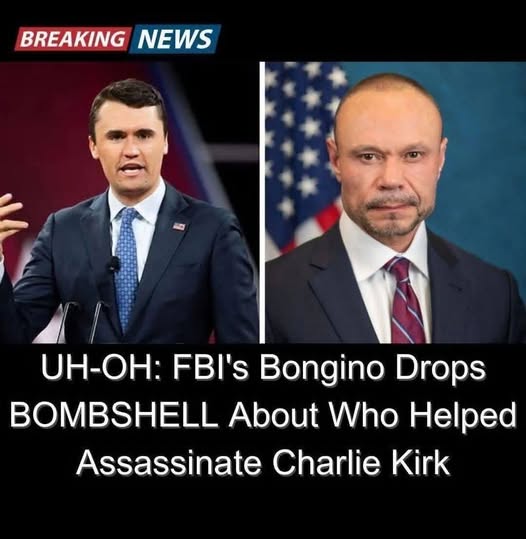The Unfolding Investigation into the Assassination of Charlie Kirk
The shocking assassination of conservative activist Charlie Kirk has ignited a complex and rapidly expanding investigation, raising numerous questions about the motive and potential collaborators involved in this tragic event. On September 10, 2025, Kirk was fatally shot while speaking at Utah Valley University during his “American Comeback Tour.” The incident not only shocked his supporters but also sent ripples through the broader political landscape. Authorities from federal, state, and local law enforcement—ranging from the FBI to the ATF—immediately sprang into action, launching a massive manhunt and forensic examination. The depth of the investigation indicates that this may not have been the act of a single perpetrator, as initial evidence suggests a broader conspiracy, prompting questions about political polarization and violence in contemporary America.
Within hours of the shooting, law enforcement agencies began collecting crucial evidence. This included not only surveillance footage from nearby cameras but also ballistic analysis and digital trails that could provide insights into the suspect’s planning and execution of the crime. The prime suspect, identified as Tyler James Robinson, was apprehended approximately 33 hours after the incident. His swift capture was aided by the meticulous collection of evidence, including DNA that linked Robinson to the crime scene, particularly a towel that was wrapped around the firearm used in the attack and a screwdriver discovered on the rooftop. The authorities have since charged him with aggravated murder, obstruction of justice, and witness tampering, which highlights the serious nature of his alleged offenses.
Investigating Broader Implications
FBI Deputy Director Dan Bongino hinted at the possibility of a deeper investigation right from the start, suggesting that authorities were not solely focusing on Robinson as a lone gunman. In a gripping interview on America’s Newsroom, Bongino stated, “If this was a larger effort, if there was any aiding and abetting—whether financial support, logistical help, or simply someone who knew the specifics of it and failed to report—we’re looking into that.” This statement underscores the complexity of the case, suggesting that Robinson’s actions may have been influenced or supported by outside individuals or groups, raising concerns about coordinated efforts aimed at political violence.As investigators probe into Robinson’s background, they are examining a multitude of leads. This extensive investigation involves analyzing text messages, chat logs, financial transactions, and travel records. Authorities are particularly focusing on Robinson’s online activities—his engagements in Discord groups, private messages, and chatrooms—where he might have expressed hostility toward Kirk or discussed his intentions. Investigators believe that these digital trails could shed significant light on whether Robinson acted independently or as part of a wider network of individuals harboring similar sentiments. Such probes into online interactions speak volumes about the role of social media and digital communication in radicalization and the cultivation of extremist behaviors.
Connections and Relationships Under Scrutiny
Another area of investigation revolves around Robinson’s relationship with his roommate, a transgender woman who is currently cooperating with law enforcement but is not viewed as a suspect. Reports indicate that Robinson had made alarming admissions in text messages to her, expressing his intention to “take out Charlie Kirk.” This troubling evidence paints a portrait of Robinson’s mindset, suggesting premeditation, yet the absence of any definitive links to established ideological networks or extremist groups complicates the narrative. The Department of Justice has publicly stated that they have found no direct connections between Robinson and any left-wing organizations, indicating that further exploration into his associations and affiliations is critical for understanding the dynamics at play.Unraveling Anomalies and Potential Collaborators
As the investigation continues, authorities are not only focused on Robinson but are also exploring any unusual or suspicious events surrounding the assassination. One notable lead involves a private aircraft that took off approximately one hour after the murder, raising questions about possible escape routes or external assistance. Additionally, a video captured just before the shooting depicts Kirk’s bodyguard making an unclear hand gesture, which could signal a warning or communication to an accomplice. If these anomalies are found to be relevant, they could indicate a level of external coordination or premeditated planning, further complicating the investigation and inviting scrutiny into the security measures taken during Kirk’s event.The developments in this case evoke a mixture of anxiety and cautious optimism among the public and Kirk’s supporters. The possibility that others may have played a role in facilitating the assassination—whether through logistical support, armaments, or insider knowledge—heightens the stakes for the investigation. Many are closely monitoring how federal authorities address these possibilities, especially in light of heightened concerns surrounding political violence in the United States. As authorities continue to emphasize their commitment to leaving no stone unturned, they promise to maintain transparency throughout the evolving investigation, crafting a narrative that could have far-reaching implications for political discourse and public safety.
Unanswered Questions and the Broader Implications
As the legal proceedings move forward, a myriad of questions remain unresolved: Was Robinson radicalized independently, or did he receive guidance from others? Did external parties assist in financing or executing his plan? And will further arrests ensue as investigators expand their search? The answers to these pressing questions are pivotal not only for Kirk’s family and supporters but also for a nation grappling with issues of political extremism and accountability. The broader implications of this case may influence future policies surrounding political engagement and security measures at public events.Ultimately, the unfolding narrative surrounding Charlie Kirk’s assassination will have lasting implications on the discourse surrounding political violence in the United States. The incident highlights the urgent need for vigilance against radical ideologies and the importance of accountability for those who facilitate such acts. As the investigation progresses, the pressure mounts on law enforcement to uncover the full truth behind this tragic event and ensure justice is served. With public interest at an all-time high, this case may serve as a critical touchstone for conversations about freedom of speech, political activism, and the boundaries of dissent in a deeply divided society.

















